


Photos by Fiona Steil-Antoni (FSA) and Joachim Steinbru (JS)
"Hi, Sagar! Thank you for your message. Busy in preparing things for Norway. Interviews after the event. Hope you understand." This was Hari's reply when I asked him for an interview prior to the Altibox Norway Chess 2016. One could literally sense the seriousness with which the Indian grandmaster was preparing for the tournament. Of course, I didn't disturb Hari with the questions but I made sure that I get to ask him loads of them after the event was finally done! And so, once the nine rounds were over, I contacted him and the soft-spoken grandmaster from Guntur, who now spends most of his time in Serbia, gladly answered all the questions.
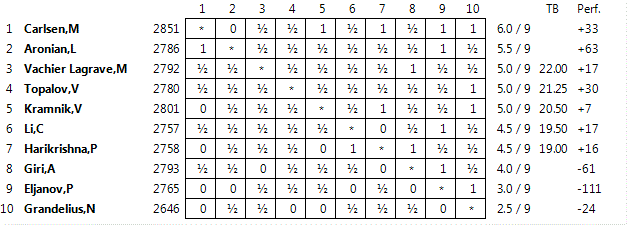
The last time we saw Harikrishna in action in a super elite Round Robin event was in Biel in July 2014. It had been almost one year and nine months since the Indian participated in a tournament of this calibre. "I played two Bundesliga games in March after the Mind games in China. So I had time to prepare for Norway. I won't be able to give away the whole process, but general training and focusing on opponent’s openings were some of the areas I concentrated on."
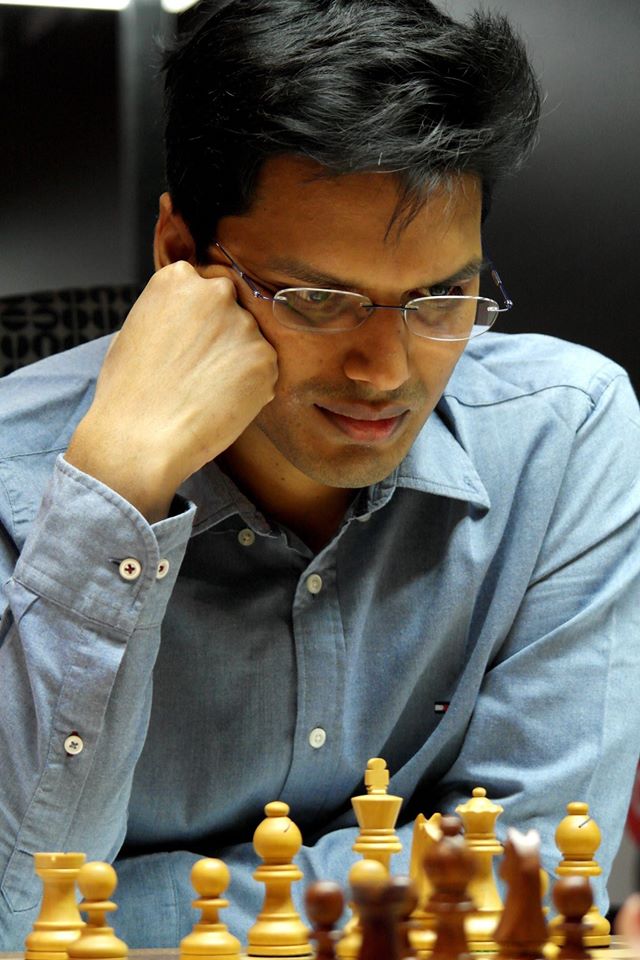
Cool, calm and composed. Those three words describe him the best! (FSA)
The blitz tournament determined the number of whites or blacks that a player received. Harikrishna finished in the bottom half and hence received four whites. Did that fact, along with facing Magnus Carlsen in the first round disturb him? "I wasn't really bothered with the pairings. Some players prefer to have five whites, but for me, it did not matter much that I got four. I forgot my preparation against Magnus after which I spent a lot of time in order to find a way to continue. For me, I have nine opponents. For me, my playing strength and focus during a game is more important than whom I am playing."
Carlsen - Harikrishna, Round one

In a well known opening position were both 8...Bb7 and 8...cxd4 look fine, Hari played 8...0-0 and after 9.dxc5 bxc5 10.Bg2 Magnus had a pleasant edge
A loss in the first round can often unsettle you. But strong players know that such things are part and parcel of a chess professional's life. "I did not think much about the loss. I just prepared for my next round game and I think with each game my play got better!"

A super stylish Hari about to enter the playing hall (FSA)
After the loss to Magnus, Harikrishna consolidated himself in the tournament with two draws against Pavel Eljanov and Veselin Topalov. In the fourth round he faced the last seed of the event Nils Grandelius. Playing his favourite French Defence, the Indian got a very promising position out of the opening after his opponent went on a pawn grabbing journey with his queen. Slowly and steadily he increased the pressure and very soon had a completely winning position.
Grandelius - Harikrishna

Harikrishna played 25...Rg8 at this point which gave his opponent a chance to break free with 26.g4! Instead he could have continued 25...Qb6 followed by doubling on the d-file which would have given him a close to winning position.
"It was not my preparation to give up a pawn in the opening against Grandelius. I found this idea over the board. I felt that Black has excellent compensation for the pawn. I could have played better and put more pressure. But I didn't have much time to analyze these games in detail and in such events you are always thinking about your next encounter."

Hari has something to show Nils on his mobile phone! (JS)
The rest day after four rounds was filled with a lot of different sports activities. One of things that the players indulged in was the "Mindball Game." Mindball Game is contained in a table. On the table top, a ball is moving back and forth during the game. The players wear headbands with electrodes which are connected to the table. The electrodes are wired up to a biosensor system. The system that is used to measure the body's biological signals registers the electrical activity in the brain - so called EEG (Electroencephalogram is an electrical waveform that is recorded from the brain by using electrodes placed on the head).
The players and the audience can follow the players’ mental process during a game as the players’ brain activity is presented graphically if a monitor is attached to the game table. Mindball Game is an exciting and social game where the audience can follow the match by watching the ball on the table, the graphics and the players, thus giving biofeedback (neurofeedback) to the players.

The World Champion took part in this game but as you can see from the white ball, he is clearly going down (FSA)

Harikrishna turned out to be the strongest Mindball Game player amongst elite! (FSA)
The last few seconds of the video shows Hari winning the finals against MVL
"It was my first time that I played the Mindball Game. In fact, it was a long struggle and MVL fought back. The video which you saw was just the final part! So it appears that I won very easily!" It seemed that the rest day had quite a positive effect on Harikrishna and in the fifth and sixth rounds he scored two consecutive victories. The first was against the man who had postponed his wedding to play in the Norway Chess 2016: Li Chao. " Li Chao came up with an interesting idea by closing e5 and h5. At first, I thought White should be much better. After few minutes of thought, I understood that the position is quite unclear. I think h4 after Nh7 is the best move for White as I mentioned in press conference. What I played in the game is interesting too." This battle against Li Chao was his favourite game from the tournament.

[Event "4th Norway Chess 2016"]
[Site "Stavanger NOR"]
[Date "2016.04.24"]
[Round "5"]
[White "Harikrishna, Pentala"]
[Black "Li Chao"]
[Result "1-0"]
[ECO "E60"]
[WhiteElo "2763"]
[BlackElo "2755"]
[Annotator "Sagar Shah"]
[PlyCount "83"]
[EventDate "2016.04.18"]
1. d4 Nf6 2. c4 g6 3. f3 {Hari goes for the same move that Magnus Carlsen used
to beat Li Chao at the Qatar Masters 2015.} c5 {This time instead of d5, the
Chinese player goes for c5 which in some ways transposes the game into Benoni/
King's Indian structures.} 4. d5 d6 5. e4 Bg7 6. Ne2 O-O 7. Nec3 $5 {Nec3 was
also used by Anand in his only Classical win against Boris Gelfand in the 2012
World Championship Match.This is how Igor Stohl describes this move. "Rather
unusual, but the underlying idea is sound enough. Instead of bothering to find
a good square for the Ne2, White will rather look for another post for his Nb1
- it might go to a3, or more probably to d2 after Be3(g5).} e5 {This is where
Harikrishna's opening preparation came to an end. This is a pretty rare move.}
8. g4 h5 $5 9. h3 {Looking to cause some major problems with the move Bg5 now.
Li Chao prepares for this.} Nh7 10. Be3 (10. h4 {Hari was looking in this
direction. But after} Bf6 11. gxh5 Bxh4+ 12. Kd2 g5 {He was not so sure about
his position. It looks like after} 13. Kc2 $16 {White should be better.}) (10.
gxh5 $6 Qh4+ $1 11. Kd2 Qxh5 $13) 10... h4 $5 {Black prepares a very
interesting idea of exchanging the dark squared bishops.} 11. Qd2 Bf6 12. Rg1
Bg5 13. Bxg5 Qxg5 (13... Nxg5 {would have been better than the game
continuation.}) 14. Nb5 $1 {This forces Black to retreat with the queen.} Qe7
15. g5 $1 {Blocking the g5 square so that it cannot be used by the black
pieces.} a6 16. N5c3 Nd7 17. Qg2 Kg7 (17... f6 18. gxf6 Rxf6 19. Qg4 g5 20.
Qxh4 Rxf3 21. Nd2 Rf4 22. Qg3 {is quite a messy position but no so bad for
Black.}) 18. Nd2 f6 19. gxf6+ Qxf6 (19... Rxf6 20. Qg4 $16) 20. Nd1 $1 {
A brilliant idea. Black's plan was to play Rf7, Nf8, g5 and Ng6. However, Hari
is quick to take measures against that and prepare Nd1-f2-d3 in order to break
in the centre with f4! This truly shows how strong he is.} Rf7 21. Nf2 Ndf8 22.
Nd3 b5 (22... g5 {was the critical test.} 23. f4 $1 {A similar idea like in
the game.} exf4 24. e5 dxe5 25. Ne4 $44 {With excellent compensation.} Qg6 26.
Qe2 (26. Nxe5 f3 $19) 26... Nd7 27. O-O-O) 23. O-O-O $1 g5 24. f4 $3 {This is
clearly the best move in the game! Black's position is ripped to shreds after
this.} exf4 25. e5 $1 {Pawns are not really so important at this moment!} Qf5 (
25... dxe5 26. Ne4 Qh6 27. Nxe5 Re7 28. Nc6 $16) 26. e6 f3 (26... Re7 27. Qe4
$1 $18) 27. Qh2 Bxe6 {Black sacrifices the piece for a few pawns but it is not
enough.} 28. dxe6 Qxe6 29. Nf2 Qe3 30. Ng4 Qf4 31. Qxf4 Rxf4 32. Nxf3 $1 {
Always tactically alert!} bxc4 (32... Rxf3 33. Bg2 $18) 33. Ngh2 Ne6 34. Rxd6
Nd4 35. Rd7+ Kh8 36. Ne5 Nf8 37. Rf7 Re4 38. Rxg5 Rd8 39. Rxf8+ Rxf8 40. Ng6+
Kg7 41. Nxf8+ Kxf8 42. Rxc5 {A powerpacked game by Harikrishna. Especially the
moves f4 followed by e5.} 1-0

Hari and Li Chao are good friends off the board, but on the board they played like mortal enemies! (FSA)
Next up was the Anish Giri challenge. The Dutch grandmaster had hardly lost a game in the past year or so as White prior to the Norway Chess 2016 - the Semi-final game against Svidler from World Cup 2015 is one of those lone occurences that comes to mind. But in Stavanger, Giri had come with an intention to play aggressive chess. Against Harikrishna, he erred in a very crucial position:
Anish Giri - Harikrishna, round six
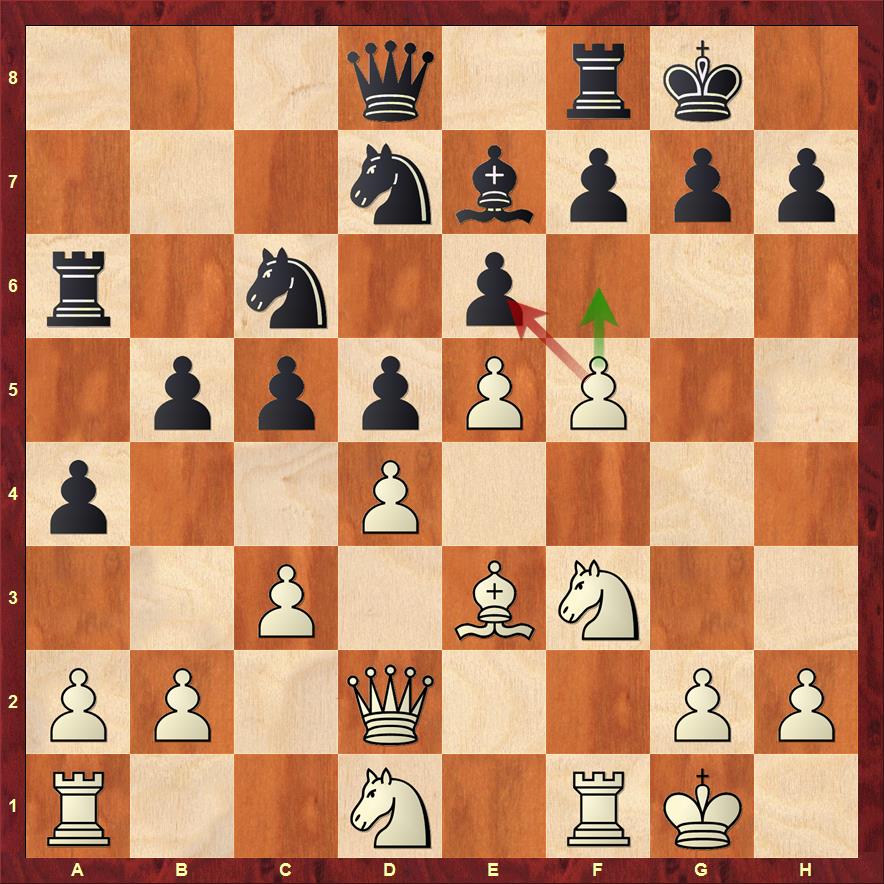
"15.fxe6, I felt was a mistake. I don't think it is losing after this. However, White's counter chances on king side are stopped. 15.f6 is critical and unclear." Once White's attack on the kingside fizzled out, Harikrishna took over and won a fine game. From being one of the tailenders he had propelled himself to the joint second spot with 3.5/6. "Obviously, I was pleased with my play. However, I did not think it is so important to feel happy about the victories when three strong opponents (MVL, Kramnik and Aronian) are waiting for you in the next rounds."
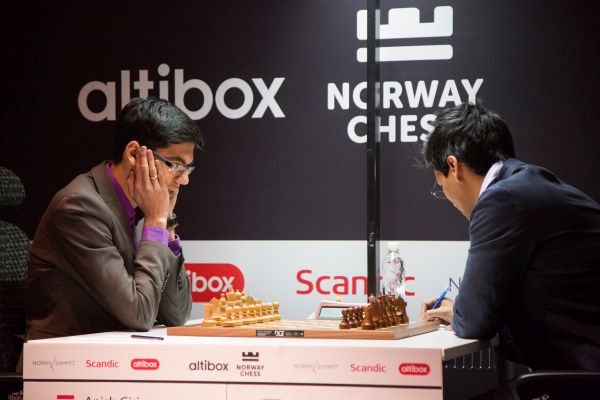
Beating the super solid Anish Giri with the black pieces is never easy (JS)
As there were no activities, the second rest day was spent in quite a relaxed manner. The nice and sunny climate motivated Hari and his second Markus Ragger to go out on a long walk. How did Hari decide on Markus Ragger as his second in the event? "He is my team mate in Solingen which I joined for the 2015-2016 Bundesliga season. We interacted with each other during the Bundesliga and that's how Markus joined me in Norway. I must say that he did an excellent job."

Spot the two seconds! (FSA)
"My games against MVL are always interesting. In the seventh round I missed some chances and later on had to play accurately to make a draw." With 4.0/7, a strong finish was expected but his ambitions were cut short when he lost to Kramnik in the eighth round. "Against Vladimir, it seemed like Black's position is fine out of the opening. However, there are many points to be solved and I missed the Ng5 move. After which it went downhill. There were some suggestions by the computer with which I could have fought on. But during the game it is never possible to calculate as much as the computer does!"
Vladimir Kramnik - Harikrishna , Round 8

17.Ng5! is the move that threw Hari off balance
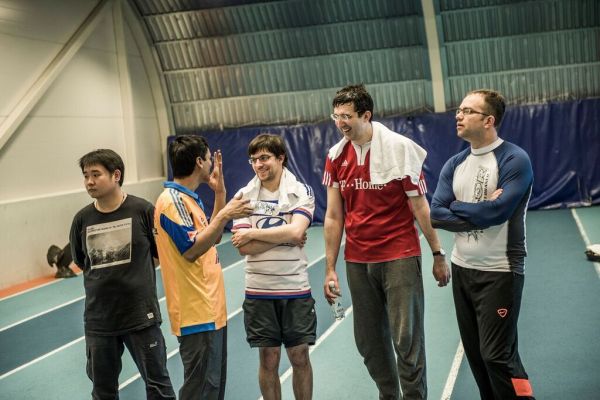
It's never easy to face the big Vlad! (JS)
A tame draw against Aronian ensued in the last round. Harikrishna ended the tournament with 4.5/9 and a 50% score. "There will always be ifs and buts! I am satisfied with my play. I am sure that I need to work and improve on some things. I will get a clearer idea after I analyze in detail, but I am not going to share them with you!"
Slowly and steadily Hari has been climbing the Elo ladder and now has a rating of 2764, just six Elo points away from Vishy Anand. Is this race against Anand something that motivates him to perform better? "I understand that chess lovers from India are excited about it. In a way, this race is good if it attracts more people to the game of chess in the country! As for me personally, this is not the most important thing."
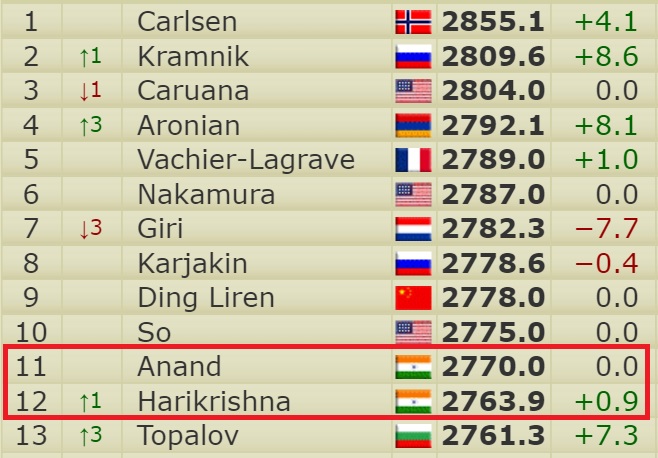
Alone at the top for nearly three decades, Anand finally has some Indian company!
This was not the last super tournament that sees Hari in action. Next up he will be participating in Shamkir and will follow that up with Danzhou. And what about joining team India for the 2016 Olympiad in Baku? "It's too early to discuss", is Hari's non-committal reply!
ChessBase wishes Harikrishna the best for his future events and we hope that he soon surpasses the magical 2800 Elo figure.
Below are nine annotated games of Harikrishna from the Norway Chess 2016. Select the games from the dropdown menu:

[Event "4th Norway Chess 2016"] [Site "Stavanger NOR"] [Date "2016.04.19"] [Round "1.2"] [White "Carlsen, Magnus"] [Black "Harikrishna, Pentala"] [Result "1-0"] [ECO "E15"] [WhiteElo "2851"] [BlackElo "2763"] [Annotator "Sagar Shah"] [PlyCount "81"] [EventDate "2016.04.19"] {Going into the game Magnus was definitely to win this battle considering the limited experience Harikrishna has at super-elite tournaments and also because the World Champion had the white pieces.} 1. d4 Nf6 2. c4 e6 3. Nf3 b6 { Hari doesn't go for the QGD with 3...d5, and instead opts for the Queen's Indian Variation.} 4. g3 Ba6 5. Nbd2 {This is known to be a pretty unambitious line. Mainly because the knight is not so well placed on d2. Of course it would like to go to c3. But the problem that White faces after the move Ba6 is that any and every move that he plays to defend the c4 pawn has some drawback. If he goes b3, the dark squares are weakened a bit and Black can take advantage of it by Bb4+. If Qc2 or Qa4 is played then the control on d5 is lost and hence after c5, d5 becomes a gambit. Tough Nbd2 is not dangerous for Black, whatever Magnus plays could be the start of a new direction in theory.} Bb4 {Threatening to win the c4 pawn.} (5... Bb7 {is the main line and after} 6. Bg2 c5 7. e4 cxd4 (7... Nxe4 $2 8. Ne5 $18) 8. Nxd4 Bc5 {With a hedgehog like position.}) 6. Qa4 $5 (6. Qc2 {is the line suggested by Simon Williams in his latest DVD on beating the Queen's Indian. This move was a favourite of Vassily Ivanchuk and Anatoly Karpov.}) 6... c5 7. a3 Bxd2+ 8. Bxd2 O-O $6 {White hasn't really scored well in this line in the past. But he has a decent position with the double bishops and good chances of trying for an opening edge.} (8... cxd4 9. Bg2 (9. Nxd4 Bb7 {looks a little uncomfortable for White who now has to play f3} 10. f3 O-O 11. Bg2 Nc6 {I don't really see how Black can be worse here.}) 9... Bb7 10. O-O Bc6 11. Qc2 Bxf3 $5 12. Bxf3 Nc6 { And it is not going to be easy to win the d4 pawn.}) (8... Bb7 {is the main line.} 9. Bg2 {tranposes to the above variation.} (9. dxc5 bxc5 {looks pretty ok.})) 9. dxc5 $146 {Technically this is a novelty but the character of the position remains the same.} bxc5 10. Bg2 $14 {White has got what he wanted. A slight pull from the opening.} Qb6 11. O-O Nc6 (11... Qxb2 12. Rfb1 {traps the queen.}) 12. Be3 Rfc8 $5 (12... Ng4 $2 13. Bxc5 Qxc5 14. Qxa6 $16) 13. Rfd1 $1 {Avoiding the temptation of taking on c5.} (13. Bxc5 Qxc5 14. Qxa6 Qa5 $1 { A strong move foreseen by Harikrishna.} 15. Qxa5 Nxa5 16. Ne5 Rab8 $44 { And Black has enough counterplay.}) 13... d5 (13... Rab8 {Keeping the position as it is, but still White is better after} 14. Bf4 Rb7 15. e4 $1 Nxe4 16. Ne5 $36) 14. cxd5 exd5 15. Bxc5 Qa5 (15... Qxc5 16. Qxa6 $16) 16. Qc2 (16. Qxa5 Nxa5 17. Nd4 $1 (17. b4 Nb3 $11) 17... Rxc5 18. b4 Rc4 19. bxa5 $14 {White has a slight pull here. But nothing very serious.}) 16... Bxe2 17. Qxe2 (17. b4 Bxd1 $1 $17) 17... Qxc5 18. Rac1 Qb6 19. b4 {With the isolated queen pawn to play against and the queenside majority White has a clear advantage.} h6 20. Qe3 $1 {Why would a normal person be ready to accept a sickly looking isolated pawn on e3. And that too voluntarily in a position where there are other better moves? Well, the secret to this lies in the fact that Magnus is very well acquainted with the Classics. Most probably he drew this idea from the game Botvinnik versus Boleslavsky.} Qb7 {Hari prefers to keep the queens but now he just much worse.} (20... Qxe3 21. fxe3 {It is true that the e3 pawn is weak but now White has much greater control on the d4 square and it is not so easy to take advantage of the e3 weakness. Meanwhile d5 is pretty ripe and can fall any moment.} Ng4 22. Re1 $1 {Keeps the tension and prepares Nd4.} (22. Bh3 h5 23. b5 (23. Rxd5 Nxb4 $1 24. Rxc8+ Rxc8 25. axb4 Rc1+ 26. Bf1 (26. Kg2 Nxe3+ $19) 26... Rxf1+ 27. Kxf1 Nxe3+ $17) 23... Na5 24. Rxc8+ Rxc8 25. Bxg4 hxg4 26. Ne5 {White wins a pawn but with all these weaknesses it should be close to a draw.}) 22... Ne7 23. Nd4 Rxc1 24. Rxc1 Nxe3 25. Re1 N3f5 26. Nxf5 Nxf5 27. Re5 $14) 21. Bh3 $1 Re8 22. Qc3 Ne7 23. Nd4 $16 {White has absolute control on the position and against Magnus this is surely a recipe for disaster.} Ne4 24. Qc7 Qa6 25. f3 Ng5 26. Bd7 $1 {The precision with which Magnus plays is just mindboggling.} Red8 27. h4 $1 {The knight is almost trapped.} Nxf3+ {It's a practical try but Black surely doesn't have enough here.} (27... Nh7 28. Re1 Qf6 29. Rcd1 {Doesn't look appetising at all for Black.}) 28. Nxf3 Qxa3 29. Kg2 Qb2+ (29... Qxb4 30. Nd4 $18) 30. Rd2 Qxb4 31. Re1 a5 32. Rde2 Ng6 33. h5 Nh8 ( 33... Nf8 34. Be8 $1 $18 {The f7 pawn is the problem.}) 34. Bf5 a4 {Even before the a-pawn could get even slightly threatening Magnus launches a decisive attack.} 35. Ne5 Qd6 (35... a3 36. Nc6 $18) 36. Qc2 $1 {Keeping the queens is the easiest way to finish off the game.} Re8 37. Bh7+ Kf8 38. Qf5 ( 38. Nd7+ Qxd7 39. Qc5+ {was another pretty way to win.}) 38... Re7 39. Bg6 Kg8 40. Nxf7 Rxf7 41. Bxf7+ {And before he would be mated. Harikrishna resigned. Overall I think it was a flawless game by Magnus Carlsen.} 1-0 [Event "4th Norway Chess 2016"] [Site "Stavanger NOR"] [Date "2016.04.20"] [Round "2.5"] [White "Eljanov, Pavel"] [Black "Harikrishna, Pentala"] [Result "1/2-1/2"] [ECO "E20"] [WhiteElo "2765"] [BlackElo "2763"] [Annotator "Sagar Shah"] [PlyCount "89"] [EventDate "2016.04.19"] 1. d4 Nf6 2. c4 e6 3. Nc3 Bb4 4. f3 {Eljanov signals his aggressive intentions. He would like to play the Saemisch system and we are in for an exciting game of chess.} c5 (4... d5 {is the more solid way to play.}) 5. d5 b5 $5 {What can we say about this line! You can say that it is the Blumenfeld delayed. The move f3 makes sense because a direct e4 is now possible.} 6. e4 O-O 7. Nh3 (7. e5 Ne8 $1 {White's centre is over extended and will come under great stress after the move d7-d6.}) 7... d6 8. Nf4 {This position was reached in the game Grichuk-Topalov where the Bulgarian went for the Benoni structure with exd5. Here Harikrishna closes the centre.} e5 9. Nfe2 Nh5 (9... bxc4 10. Ng3 $13) 10. g4 $5 {Eljanov is ready to forego castling in order to stall the move f5.} Qh4+ (10... f5 $5 {Wow! This move was really possible. But isn't the knight on h5 hanging?} 11. gxh5 (11. exf5 Qh4+ 12. Kd2 Qf2 {With attack.}) 11... Qh4+ 12. Kd2 fxe4 13. fxe4 Qxe4 14. Ng3 Rf2+ 15. Be2 Qxc4 {And the position is completely crazy. Something like} 16. Ke1 Rxe2+ 17. Ngxe2 Bg4 {And Black has some compensation for the missing rook.}) 11. Kd2 Nf4 12. Nxf4 exf4 13. Kc2 { White has found a safe shelter for his king and his position looks better.} bxc4 14. Bxf4 Qf6 15. Qd2 Nd7 16. Be2 (16. Bxc4 {was better and after} Ne5 ( 16... Nb6 17. Be2 {White can claim a small edge.}) 17. Be2 $14) 16... Qe7 17. Bxc4 Rb8 18. b3 Nb6 19. Qd3 Bd7 20. Bd2 Nxc4 21. bxc4 Rb6 {Black's position is much easier to play.} 22. Rhb1 Rfb8 23. a3 Bxc3 24. Bxc3 {It is true that we have opposite coloured bishop endgame but the White king is weaker than Black's but White has an extra pawn. So it shouldn't such a huge edge.} Ba4+ 25. Kc1 h5 26. Rxb6 Rxb6 27. Rb1 $1 {After the mass rook exchange Black remains slightly better but White won't be in danger of getting mated.} hxg4 28. f4 $1 (28. fxg4 Qg5+ $17) 28... Rxb1+ 29. Kxb1 Qb7+ (29... Qh4 30. Qg3 { And there is no way in.} Qxg3 31. hxg3 Bb3 32. Ba5 Bxc4 33. Kc2 Kf8 34. Kc3 Ba2 35. Kb2 Bc4 36. Kc3 $11) 30. Bb2 Qb3 31. Qxb3 Bxb3 {Once the queens are exchanged, it is just a draw.} 32. e5 dxe5 33. d6 Kf8 34. Bxe5 g6 35. d7 Ke7 36. Kb2 Bxc4 37. Kc3 Bb5 38. Bd6+ Kxd7 39. Bxc5 Ke6 40. Kd4 a6 41. Ke3 Bc6 42. Bb4 Bb5 43. Bc5 Bc6 44. Bb4 Bb5 45. Bc5 1/2-1/2
[Event "4th Norway Chess 2016"]
[Site "Stavanger NOR"]
[Date "2016.04.21"]
[Round "3.1"]
[White "Harikrishna, Pentala"]
[Black "Topalov, Veselin"]
[Result "1/2-1/2"]
[ECO "E53"]
[WhiteElo "2763"]
[BlackElo "2754"]
[Annotator "Sagar Shah"]
[PlyCount "45"]
[EventDate "2016.04.19"]
1. d4 Nf6 2. c4 e6 3. Nc3 {Hari accepts the invitation of going into the Nimzo
Indian.} Bb4 4. e3 {The Rubinstein Variation is quite contradictory in nature.
White closes his bishop on c1 with this move but still this move is quite
ambitious in nature. The reason: Other pieces have natural squares to develop.
For eg. the knight goes to f3 and the bishop to d3. Later on e4 will liberate
the c1 bishop.} O-O 5. Bd3 c5 6. Nf3 d5 {This is the tabiya of the entire
opening. Now the main move is 0-0. But Hari goes for immediate clarification
in the centre.} 7. cxd5 exd5 (7... Nxd5 8. O-O $1 Nxc3 9. bxc3 Bxc3 10. Rb1 $44
{And with threats like Bxh7, White has excellent compensation.}) 8. dxc5 Nbd7
$1 {Topalov makes use of the fact that he still hasn't developed his knight to
c6 and captures the pawn with his knight.} 9. Bd2 {Not many games have taken
place in this line. Two strong players Wojtaszek and Wesley So who played this
with black won their games. So it is an open question whether Harikrishna
really wanted to go for this line or not.} Nxc5 10. Be2 Ne6 {Immediately
threatening d4.} 11. a3 Be7 12. O-O a6 (12... d4 {Would not have been a good
idea now as after} 13. exd4 Nxd4 14. Nxd4 Qxd4 15. Be3 {White's slight
activity in this symmetrical position, counts for quite a lot.}) 13. Rc1 b6 14.
Na2 {Hari is trying to exchange his d2 bishop with Bb4. But Black doesn't
really have any problems with that.} Bb7 15. Bc3 (15. Bb4 Nc5 {Followed by
Nfe4 gives Black good centre control.}) 15... Ne4 16. Be5 Bf6 17. Nb4 N4c5 18.
Nd3 (18. Bxf6 Qxf6 19. Nxd5 Bxd5 20. Qxd5 Qxb2 $11) 18... Bxe5 19. Ndxe5 Qd6
20. Nc4 Qd8 21. Nce5 Qd6 22. Nc4 Qd8 23. Nce5 {Quite a tame draw. But Hari is
slowly but steadily getting in the groove.} 1/2-1/2
[Event "4th Norway Chess 2016"]
[Site "Stavanger NOR"]
[Date "2016.04.22"]
[Round "4.5"]
[White "Grandelius, Nils"]
[Black "Harikrishna, Pentala"]
[Result "1/2-1/2"]
[ECO "C11"]
[WhiteElo "2649"]
[BlackElo "2763"]
[Annotator "Sagar Shah"]
[PlyCount "89"]
[EventDate "2016.04.19"]
1. e4 e6 {The French is one of Harikrishna's main weapon against 1.e4.} 2. d4
d5 3. Nc3 Nf6 4. Bg5 dxe4 $5 {This release of pressure in the centre is
something that Harikrishna has played three times recently. He has a 100% with
his opponents being Naiditsch, Maze, and Libiszewski.} 5. Nxe4 Be7 6. Bxf6 gxf6
{Vidit Gujrathi also plays this line quite often, hence it is very much a
possibility that Hari and Vidit prepared this together.} 7. Qd2 b6 8. O-O-O Bb7
9. Nc3 c6 $5 {Very interesting prophylactic move against White's idea of d4-d5.
c6 looks weird but is not so bad because after Black develops, say, Nbd7 and
Qc7 and 0-0-0, then he can go for the c5 break.} 10. Nf3 Nd7 11. Qh6 Qc7 $5 {
Hari doesn't really care about his h7 pawn.} 12. Qg7 Rf8 13. Qxh7 f5 14. Bc4
Nf6 15. Qh6 {It looks like the white queen will go back to d2 and White would
be a pawn up. However, here Black should have either 0-0-0 or started a
queenside pawn expansion.} Ng4 $6 (15... b5 16. Bb3 a5 $1 17. d5 (17. a3 a4 $1
18. Ba2 b4 19. axb4 a3 {and Black is breaking through.}) 17... Ng4 18. Qd2
O-O-O {Regaining the pawn.}) 16. Qd2 O-O-O 17. h3 Nf6 18. Ne5 {Threatening
moves like Nxf7 followed by Bxe6.} Kb8 19. Rhe1 b5 $1 20. Bb3 b4 21. Ne2 (21.
Na4 c5 $1 22. Qf4 c4 $1 23. Bxc4 Ne4 $1 {Bg5 is really a difficult threat to
meet and so is f6.}) 21... c5 (21... Ne4 22. Qe3 c5 {transposes to the game.})
22. Qe3 Ne4 23. f4 cxd4 $1 {This along with f6 are strong continuations.} (
23... f6 $1 24. Ng6 (24. Nc4 cxd4 25. Nxd4 Bc5 26. Kb1 Rxd4 27. Rxd4 e5 $19)
24... c4 25. Ba4 (25. Nxe7 cxb3 $19) 25... Rf7 26. Nxe7 Rxe7 $17) 24. Nxd4 Bc5
{This pin is quite irritating.} 25. Nef3 Rg8 $6 {Hari in the press conference
said that this was a stupid move.} (25... Qb6 $1 {Increasing the pressure on
d4 puts White in a real bind. The idea is to simply follow up with f6 and e5.}
26. Kb1 Rd6 {With the idea of Rfd8 looks very strong. If White is forced to
play the move c3 he cannot be very happy.}) 26. g4 fxg4 (26... Qb6 $1) 27. hxg4
Rxg4 {Black has recovered the pawn and still keeps his edge.} 28. Ne5 Rxd4 $1
29. Rxd4 Rg3 30. Qxe4 {The queen sacrifice is forced. Or else you lose the
rook on d4.} Bxe4 31. Rdxe4 {Even though Black is better, this position is not
so easy to play. Mainly because the Black king isn't very secure. Harikrishna
tries to exchange a pair of rooks but in that process gives up the b4 pawn.}
Rg1 $6 (31... Ka8 {was better.}) 32. Rxg1 Bxg1 33. Rxb4+ Bb6 34. a4 {Now White
should have too many problems to hold this.} Ka8 35. Kb1 Qe7 36. Rc4 Bc7 37.
Nd3 Bd6 38. a5 Kb8 39. Ba4 Qb7 40. Rc6 Bxf4 41. Nc5 (41. Nxf4 $2 Qb4 $1 $17)
41... Qe7 42. Na6+ Kb7 43. Nc5+ Kb8 44. Na6+ Kb7 45. Nc5+ {An excellent game
by Harikrishna who really outplayed Nils in the opening and the middlegame. Bu
the Swedish player showed great tenacity and was able to find some nice
resources to hold the draw.} 1/2-1/2
[Event "4th Norway Chess 2016"]
[Site "Stavanger NOR"]
[Date "2016.04.24"]
[Round "5"]
[White "Harikrishna, Pentala"]
[Black "Li Chao"]
[Result "1-0"]
[ECO "E60"]
[WhiteElo "2763"]
[BlackElo "2755"]
[Annotator "Sagar Shah"]
[PlyCount "83"]
[EventDate "2016.04.18"]
1. d4 Nf6 2. c4 g6 3. f3 {Hari goes for the same move that Magnus Carlsen used
to beat Li Chao at the Qatar Masters 2015.} c5 {This time instead of d5, the
Chinese player goes for c5 which in some ways transposes the game into Benoni/
King's Indian structures.} 4. d5 d6 5. e4 Bg7 6. Ne2 O-O 7. Nec3 $5 {Nec3 was
also used by Anand in his only Classical win against Boris Gelfand in the 2012
World Championship Match.This is how Igor Stohl describes this move. "Rather
unusual, but the underlying idea is sound enough. Instead of bothering to find
a good square for the Ne2, White will rather look for another post for his Nb1
- it might go to a3, or more probably to d2 after Be3(g5).} e5 {This is where
Harikrishna's opening preparation came to an end. This is a pretty rare move.}
8. g4 h5 $5 9. h3 {Looking to cause some major problems with the move Bg5 now.
Li Chao prepares for this.} Nh7 10. Be3 (10. h4 {Hari was looking in this
direction. But after} Bf6 11. gxh5 Bxh4+ 12. Kd2 g5 {He was not so sure about
his position. It looks like after} 13. Kc2 $16 {White should be better.}) (10.
gxh5 $6 Qh4+ $1 11. Kd2 Qxh5 $13) 10... h4 $5 {Black prepares a very
interesting idea of exchanging the dark squared bishops.} 11. Qd2 Bf6 12. Rg1
Bg5 13. Bxg5 Qxg5 (13... Nxg5 {would have been better than the game
continuation.}) 14. Nb5 $1 {This forces Black to retreat with the queen.} Qe7
15. g5 $1 {Blocking the g5 square so that it cannot be used by the black
pieces.} a6 16. N5c3 Nd7 17. Qg2 Kg7 (17... f6 18. gxf6 Rxf6 19. Qg4 g5 20.
Qxh4 Rxf3 21. Nd2 Rf4 22. Qg3 {is quite a messy position but no so bad for
Black.}) 18. Nd2 f6 19. gxf6+ Qxf6 (19... Rxf6 20. Qg4 $16) 20. Nd1 $1 {
A brilliant idea. Black's plan was to play Rf7, Nf8, g5 and Ng6. However, Hari
is quick to take measures against that and prepare Nd1-f2-d3 in order to break
in the centre with f4! This truly shows how strong he is.} Rf7 21. Nf2 Ndf8 22.
Nd3 b5 (22... g5 {was the critical test.} 23. f4 $1 {A similar idea like in
the game.} exf4 24. e5 dxe5 25. Ne4 $44 {With excellent compensation.} Qg6 26.
Qe2 (26. Nxe5 f3 $19) 26... Nd7 27. O-O-O) 23. O-O-O $1 g5 24. f4 $3 {This is
clearly the best move in the game! Black's position is ripped to shreds after
this.} exf4 25. e5 $1 {Pawns are not really so important at this moment!} Qf5 (
25... dxe5 26. Ne4 Qh6 27. Nxe5 Re7 28. Nc6 $16) 26. e6 f3 (26... Re7 27. Qe4
$1 $18) 27. Qh2 Bxe6 {Black sacrifices the piece for a few pawns but it is not
enough.} 28. dxe6 Qxe6 29. Nf2 Qe3 30. Ng4 Qf4 31. Qxf4 Rxf4 32. Nxf3 $1 {
Always tactically alert!} bxc4 (32... Rxf3 33. Bg2 $18) 33. Ngh2 Ne6 34. Rxd6
Nd4 35. Rd7+ Kh8 36. Ne5 Nf8 37. Rf7 Re4 38. Rxg5 Rd8 39. Rxf8+ Rxf8 40. Ng6+
Kg7 41. Nxf8+ Kxf8 42. Rxc5 {A powerpacked game by Harikrishna. Especially the
moves f4 followed by e5.} 1-0
[Event "Altibox Norway Chess 2016"]
[Site "Stavanger"]
[Date "2016.04.25"]
[Round "?"]
[White "Giri, Anish"]
[Black "Harikrishna, Pentala"]
[Result "0-1"]
[WhiteElo "2790"]
[BlackElo "2763"]
[Annotator "Sagar Shah"]
[PlyCount "72"]
[EventDate "2016.??.??"]
1. e4 e6 {Harikrishna sticks to his French Defence which gave him a nearly
winning position against Nils Grandelius in the fourth round.} 2. d4 d5 3. Nc3
Nf6 4. e5 (4. Bg5 dxe4 5. Nxe4 Be7 6. Bxf6 gxf6 {is one of Hari's favourite
line with black. And that is the reason why Giri goes for direct 4.e5.}) 4...
Nfd7 5. f4 c5 6. Nf3 Be7 $5 {Developing the knight to c6 is of course the most
natural idea. However, with this move order Hari keeps his knight on b8 and
uses it for a different purpose, as we shall see.} 7. Be3 O-O 8. Qd2 b6 {
The idea is slowly coming to light. Black would like to exchange the light
squared bishops with Ba6. The young German GM Bluebaum is the biggest exponent
of this line.} 9. Nd1 {A natural move, getting the knight to f2 and also
bolstering the pawn chain with the move c3.} a5 10. c3 (10. a4 {is the other
option here.}) 10... a4 11. Bd3 (11. a3 Nc6 12. Nf2 Na5 13. Rd1) 11... Ba6 12.
O-O Nc6 13. Bxa6 (13. Nf2 Bxd3 14. Nxd3 c4 {followed by a3 gives Black an
excellent position.}) 13... Rxa6 14. f5 $1 {Anish is of course in a hurry! He
perfectly understands that Black has dangerous counterplay on the queenside
and he must do something on the kingside as soon as possible.} b5 $1 {With
nerves of steel Harikrishna is not afraid of the pawn coming to f6.} (14...
exf5 {was the normal move, so that you do not have to deal with f5-f6. However,
White gets some attacking chances after} 15. Bf2 {with the idea of Ne3 is also
interesting.} (15. Qd3 {is the natural move regaining the pawn.} Ra8 16. Qxf5
g6 17. Qh3 {and White looks better.})) 15. fxe6 $6 {15 minutes of thought
before making a move that he was not at all happy in the press conference.
According to Anish, Hari and Peter Svidler, all three of them agreed, that
White should sacrifice the pawn with f6.} (15. f6 {is surely the most critical.
After} gxf6 16. exf6 Bxf6 {White has many ways to attack. Black's main
defensive idea lies in dropping back his bishop to g7 and then pushing his
pawn to f5.} 17. Bh6 (17. dxc5 {is also an option.}) 17... Bg7 18. Bxg7 Kxg7
19. Nf2 Kh8 (19... f5 20. Rae1 $44 {gives White excellent compensation for the
pawn.}) 20. Rae1 {and Black seems to be alright here but with a slightly
exposed king, he can never really breathe easy.} (20. Ng4 f5 $17)) 15... fxe6
16. Qe2 Qb6 {Black's queenside play is much easy to execute now that White has
no attack on the other wing.} 17. Nf2 a3 18. b3 (18. b4 $5 {Giving up a pawn
could have been a good idea to stabilize the situation on the queenside.} cxb4
19. cxb4 Nxb4 20. Rab1 {with counterplay.}) 18... b4 $1 {Black keeps up the
pace of his queenside play.} 19. dxc5 (19. cxb4 Nxb4 $15 (19... cxd4 $2 20.
Nxd4 $1 Nxd4 21. Bxd4 Qxd4 22. Qxa6 Rxf2 23. Qxe6+ Rf7+ 24. Kh1 Nxe5 25. Rxf7
Nxf7 26. Rf1 $18)) 19... Bxc5 20. Bxc5 Nxc5 21. c4 Ne4 22. cxd5 exd5 23. e6 (
23. Kh1 {doesn't work now due to} Nxf2+ 24. Rxf2 Nxe5 $1 $17) 23... Ne7 24. Kh1
Nc3 25. Qd3 h6 26. Nd1 Qb5 $1 {With the queen exchange the position is already
lost for White. The e6 pawn is falling and the a2 is a fixed weakness.} 27.
Qxb5 Nxb5 28. Nf2 (28. Re1 Rf6 $19) 28... Rxe6 29. Nd3 Nc6 30. Rfc1 Nc3 31.
Nxb4 Nxb4 32. Rxc3 Re2 {The a2 pawn is falling.} 33. Rc7 Ra8 $1 {An accurate
move preventing Ra7.} 34. Nd4 (34. h3 Rxa2 35. Re1 Rc2 $1 $19) 34... Rxa2 35.
Rf1 Rd2 36. h3 a2 {A very nicely played game by Hari and a completely bad day
at the office for Anish.} (36... Rxd4 $2 37. Rff7 $11) 0-1
[Event "Altibox Norway Chess 2016"]
[Site "Stavanger"]
[Date "2016.04.27"]
[Round "?"]
[White "Harikrishna, Pentala"]
[Black "Vachier-Lagrave, Maxime"]
[Result "1/2-1/2"]
[WhiteElo "2763"]
[BlackElo "2788"]
[Annotator "Sagar Shah"]
[PlyCount "98"]
[EventDate "2016.??.??"]
1. d4 Nf6 2. c4 g6 3. f3 {Harikrishna is not afraid of his opponent's
preparation and sticks to the same line that he played against Li Chao.} c5 (
3... d5 {No one really seems interested to try and uphold the Grunfeld!}) 4. d5
d6 5. e4 e6 6. Ne2 Bg7 7. Nec3 Nh5 8. Qe2 $5 {This move was made pretty
instantly by Hari which meant that he was prepared. What is the idea of this
move? Black was threatening Qh4+. Now it can be met with g3 Nxg3 Qf2!} (8. Be3
f5 {gives Black counterplay.}) 8... Be5 {Played after 16 minutes of thought.} (
8... Qh4+ 9. g3 $1 Nxg3 10. Qf2 $1 Be5 11. f4 $18) 9. Be3 (9. g3 exd5 10. Nxd5
Nc6 11. f4 Bg7 12. Nbc3 Nd4 {And Black looks completely fine.}) 9... f5 $5 {
Black is playing actively. But with a knight on h5 he has to do that.} (9...
O-O 10. g4 Nf4 11. Qd2 g5 12. h4 f5 $5) 10. exf5 exf5 (10... gxf5 11. f4 (11.
dxe6 $16) 11... Nxf4 12. Bxf4 Bxf4 13. dxe6 Qg5 14. Nd5 Nc6 15. Nc7+ Kd8 16.
Nxa8 Nd4 $19 {And Black is just winning thanks to his immensely active pieces.}
) 11. f4 Bg7 12. Bf2+ (12. Bxc5+ $6 Kf7 {With rook coming to e8 this is
excellent compensation.}) 12... Kf7 (12... Qe7 {was also possible but MVL was
trying for an advantage.}) 13. Qd2 Nf6 14. h3 a6 15. a4 (15. Be2 b5 16. cxb5
axb5 17. Bxb5 Ba6 18. Bxa6 Nxa6 19. O-O Re8 $44 {with excellent play for the
pawn.}) 15... a5 {The downside of this move is that Na3-b5 is a clear plan now.
And the upside is that Na6-b4 is also a good square for the Black knight.} 16.
Be2 Na6 17. O-O Bd7 18. Bf3 Re8 19. Na3 {In general it seems like Black is
going to suffer for the rest of the game due to the lack of space in the
position. White's knight on b5 continuously attacking the d6 pawn will be very
irritating.} Qb6 20. Nab5 Nb4 21. Rae1 Rxe1 22. Rxe1 Re8 23. Re2 $14 Bc8 24.
Bh4 Rxe2 25. Qxe2 Qd8 26. g4 (26. Nd1 $1 {Would have really made Black's life
difficult. The idea is to prevent the queen exchange after Qe7 with the move
Ne3!} Qe7 27. Ne3 $14 {Next up is g4 and White has a very pleasant edge.})
26... Qe7 27. Qd2 (27. gxf5 Bxf5 28. Ne4 Bxe4 29. Bxe4 $16) 27... Bd7 28. gxf5
Bxf5 29. Bg4 Ke8 30. Bxf5 gxf5 31. Kf1 (31. Qg2 $5 Kf8 (31... Kd7 32. Qg5 $18)
32. Qg3 $16) 31... Kd7 32. Qg2 Qf7 33. Bxf6 Bxf6 34. Qe2 Qg8 35. Nd1 Bd4 36.
Nf2 Qg6 37. Nxd4 $6 {A very dangerous way to play.} (37. b3 {keeping control
was the safer way to play.}) 37... cxd4 38. c5 dxc5 (38... Nxd5 39. Qb5+ Kc8
40. c6 Qf7 (40... bxc6 41. Qxc6+ Nc7 42. Qb6 $11) 41. cxb7+ Qxb7 42. Qc4+ Kd7
43. Qxd4 Ke6 $17) 39. Qb5+ Kd6 40. Qxb7 Qe8 41. Qxh7 {The position is quite
complicated but there are enough resources for both sides. The margin for a
draw is pretty huge in this position.} Nxd5 42. Qh6+ Kc7 43. b3 Ne3+ 44. Kg1
Qg8+ 45. Qg5 Qxb3 46. Qe7+ Kc6 47. Qe8+ Kc7 48. Qe7+ Kc6 49. Qe8+ Kc7 {A
fighting draw.} 1/2-1/2
[Event "4th Norway Chess 2016"]
[Site "Stavanger NOR"]
[Date "2016.04.28"]
[Round "8.5"]
[White "Kramnik, Vladimir"]
[Black "Harikrishna, Pentala"]
[Result "1-0"]
[ECO "A04"]
[WhiteElo "2801"]
[BlackElo "2763"]
[Annotator "Sagar Shah"]
[PlyCount "93"]
[EventDate "2016.04.19"]
1. Nf3 e6 2. g3 b5 $5 {Harikrishna is not afraid of making some bold moves
against the ex-World Champion.} 3. e3 $5 {Kramnik is in mood for creative
chess. The normal reply would have been Bg2. But with e3 the Russian wants to
prove that e3 is much more useful than a6.} a6 4. Bg2 Bb7 5. O-O Nf6 6. b3 c5
7. c4 Be7 8. Nc3 O-O {Truth be told there seems absolutely nothing wrong with
Black's position. He has comfortably equalized out of the opening.} 9. d4 (9.
cxb5 $6 axb5 10. Nxb5 Ba6 $1 $15 {is strong because the rook on a1 is
undefended and hence a4 is not possible.}) 9... d5 10. cxd5 (10. Ne5 Qc7 $15)
10... Nxd5 11. Nxd5 Bxd5 12. dxc5 Bxc5 (12... Nd7 {And taking with the knight
was also possible.}) 13. Qe2 Nd7 14. Rd1 Qe7 15. Bb2 Rac8 16. Rac1 Bb7 (16...
Nf6 17. Ne5 $14 {is also a slight edge for White.}) (16... f6 $5 {With the
idea of later going e5 can be an idea.}) 17. Ng5 $1 {Kramnik is quick to seize
the moment. With this move he is threatening things like Ne4 when his knight
would be looking at the juicy d6 square. Also Qd3 comes into the picture.} Bxg2
18. Kxg2 f5 (18... Qxg5 19. Rxd7 $16) (18... Nf6 19. Bxf6 Qxf6 20. Qh5 $1 Qh6 (
20... h6 $2 21. Ne4 $18) 21. Qxh6 gxh6 22. Ne4 $14) 19. e4 $1 h6 20. Nf3 Nf6 (
20... f4 21. Rc2 {With the idea of doubling on the d or the c-file is pretty
strong. But this is much better than what occured in the game.}) 21. exf5 exf5
22. Qxe7 Bxe7 23. Nd4 $1 $16 {The knight is looking at f5 and e6 and just like
that Black is almost lost! This is why Kramnik was and is still called a
positional genius.} Rxc1 24. Rxc1 Nd5 25. Ne6 Rf7 26. Rc8+ Kh7 27. Ra8 (27.
Bxg7 Rxg7 28. Nxg7 Kxg7 29. Rc6 Nb4 {And White is better but Black is fighting.
}) 27... f4 28. Rxa6 {White is just a clean pawn up.} fxg3 29. hxg3 Bf6 30. Bc1
Re7 31. Rd6 Nc3 32. a3 Kg8 33. Bb2 Ra7 34. Rc6 Nd5 35. Bxf6 Nxf6 36. Rc7 $1 {
Following Botvinnik's rule. Knight endgames are like pawn endgames. The extra
pawn will tell.} Rxa3 37. Rxg7+ Kh8 38. Rg6 Ne4 39. Rxh6+ {Two pawns up,
further resistance is futile.} Kg8 40. Rh4 Nd2 41. b4 Nc4 42. Nc7 Ra2 43. Re4
Nd6 44. Rd4 Nf5 45. Rd8+ Kf7 46. Nxb5 Rb2 47. Rd3 {A fine game by Kramnik but
a crucial loss for Hari, who effectively cannot fight for the top three spots
in the tournament.} 1-0
[Event "4th Norway Chess 2016"]
[Site "Stavanger NOR"]
[Date "2016.04.29"]
[Round "9.4"]
[White "Harikrishna, Pentala"]
[Black "Aronian, Levon"]
[Result "1/2-1/2"]
[ECO "E21"]
[WhiteElo "2763"]
[BlackElo "2784"]
[Annotator "Sagar Shah"]
[PlyCount "77"]
[EventDate "2016.04.19"]
1. d4 Nf6 2. c4 e6 3. Nc3 Bb4 4. Nf3 b6 5. e3 Bb7 6. Bd3 O-O 7. O-O c5 (7... d5
{is the other main move in this position transposing to the Petrosian
Variation.}) 8. Na4 {White threatens to disturb the bishop with a3.} cxd4 9. a3
Bd6 $5 {This has not been played by too many top players but you can be sure
that when someone plays the Candidates they always have a bagful of ideas with
themselves. The idea is to go Nc6 and prepare the move e5.} (9... Be7 {is the
more normal way to play.} 10. exd4 Nc6 11. b4) 10. exd4 Nc6 {After this move
the placement of the bishop on d6 doesn't look highly relevant.} (10... Bxf3
11. Qxf3 Nc6 {Looks like a plausible way to play as e5 is coming up.}) 11. Nc3
(11. b4 e5 $1 {This shows the main idea of the move Bd6.} 12. d5 e4 $1 $11)
11... Rc8 12. Bg5 h6 13. Bh4 Be7 {You can say that White has in some ways won
the opening battle because he forced Black to go back to e7. But for a move or
two when Black was threatening e6-e5, White had to remain careful and that was
the main idea of Bd6.} 14. Re1 (14. Bc2 Nh5 $1 15. Qd3 f5 $11) 14... d5 (14...
Na5 {Putting extra pressure on c4 was also an interesting idea.}) 15. cxd5 Nxd5
16. Nxd5 Bxh4 (16... Qxd5 17. Be4 Qd7 18. d5 exd5 19. Qxd5 Qxd5 20. Bxd5 Bxh4
21. Nxh4 $11) 17. Ne3 Bf6 {Black has absolutely no problems out of the opening.
} 18. Be4 g6 19. Qa4 a6 20. Rad1 b5 21. Qb3 Qb6 22. Ng4 Bg7 23. Qe3 Kh7 24. h4
f5 $1 {Forcing the pace of play} 25. Bxc6 Rxc6 (25... fxg4 26. Bxb7 Qxb7 27.
Ne5 $11 {is also a playable position for both sides.}) 26. Nge5 Rd6 27. Qf4
Bxf3 28. Nxf3 Rfd8 29. Rc1 Bxd4 {Mass exchanges take place and the game is
drawn.} 30. Nxd4 Qxd4 31. Qxd4 Rxd4 32. Rxe6 Rd1+ 33. Rxd1 Rxd1+ 34. Kh2 Rd2
35. Rxa6 Rxb2 36. Ra7+ Kg8 37. f3 b4 38. axb4 Rxb4 39. Kg3 {In a must win game
Harikrishna wasn't able to pose any problems to Levon.} 1/2-1/2